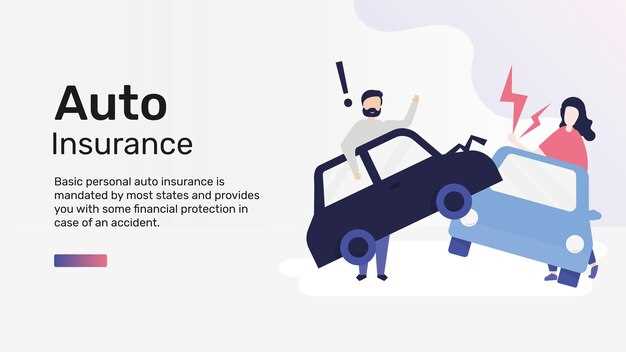
When purchasing a new vehicle, many individuals consider various aspects of insurance to ensure they are adequately protected. Among the options available, gap insurance emerges as a significant choice, especially for those who have financed their car or leased it. But the question often arises: Is gap insurance truly worth it for your car coverage?
Gap insurance is specifically designed to cover the difference–or “gap”–between what you owe on your car and its actual cash value in the event of a total loss. As vehicles depreciate rapidly, this coverage can provide peace of mind, particularly in the early years of ownership. Understanding how new car purchases interact with this insurance type is essential for making an informed decision.
In the following sections, we will delve into the intricacies of gap insurance, examining its benefits and potential drawbacks. We will explore scenarios in which this coverage can be a lifesaver and situations where it may not be necessary. By the end, you will have a clearer understanding of whether gap insurance is a worthy addition to your auto policy.
Assessing the Financial Benefits of Gap Insurance for New Car Purchases
When purchasing a new car, understanding the intricacies of gap insurance is crucial for making informed financial decisions. Gap insurance is designed to cover the difference between what you owe on your car loan and the current market value of your vehicle in the event of a total loss. This coverage becomes particularly important for new car purchases, where the vehicle’s depreciation can rapidly outpace the outstanding loan balance.
New cars typically lose value quickly, with some estimates suggesting a decrease of up to 20% within the first year of ownership. This depreciation can leave car buyers vulnerable if their vehicle is stolen or declared a total loss shortly after purchase. In such cases, standard auto insurance policies may only reimburse the market value of the car at the time of the accident, which is often significantly lower than the remaining loan balance. Gap insurance provides a safety net, ensuring that buyers do not face unexpected financial burdens during an already stressful situation.
Furthermore, gap insurance can be particularly beneficial for individuals who have made a small down payment or financed a substantial portion of their vehicle’s cost. Without this insurance, car owners might find themselves financially strapped, having to pay out of pocket to settle a loan while being without a vehicle. Thus, for new car owners, gap insurance can be a wise investment, adding a layer of financial security to their insurance portfolio.
In conclusion, assessing the financial benefits of gap insurance for new car purchases reveals its value in safeguarding against potential losses. By mitigating the risks associated with rapid depreciation and providing peace of mind, gap insurance empowers new car buyers to enjoy their vehicle without the anxiety of financial shortfalls in the event of an accident or theft.
Understanding When Gap Insurance Becomes Necessary for Vehicle Financing

Gap insurance is a crucial form of protection for those who have financed a new car. This type of insurance covers the difference, or “gap,” between what you owe on your car loan and the car’s current market value in the event of theft or a total loss. It becomes particularly necessary under several specific circumstances.
First, if you have a low down payment, gap insurance is advisable. When financing a new vehicle, putting down less than 20% increases the likelihood that you will owe more than the car’s depreciated value shortly after purchase. As cars can lose significant value within the first few years, a low down payment can result in a financial shortfall in case of an accident.
Second, if you have a long-term loan, gap insurance should be considered essential. Longer loan terms often mean lower monthly payments, but they can also extend the duration of being “upside down” on a loan, where the owed amount exceeds the car’s worth. The risk is higher with loans that stretch beyond five years.
Additionally, if your new car is a model known for rapid depreciation, gap insurance is important. Certain vehicles lose value quicker than others, making it critical to protect yourself against potential financial loss. This is particularly true for luxury vehicles or those that are popular at the time of release but may decline in value sharply thereafter.
Finally, if you frequently drive your new car or rely on it for significant daily usage, gap insurance adds an extra layer of security. The more you use the vehicle, the higher the likelihood of an accident occurring, which underscores the importance of being covered for any potential difference between debt and value.
In summary, gap insurance should be an essential consideration when financing a new vehicle, especially under the conditions of low down payments, long loan terms, rapid depreciation, and high usage. It serves as a safety net, ensuring that you do not face unexpected financial burdens in the event of a total loss.
Evaluating the Cost vs. Coverage of Gap Insurance in Your Policy

Gap insurance is designed to cover the difference between what a car is worth at the time of a total loss and what you owe on it. For new car owners, understanding this concept is crucial, as depreciation can significantly impact the value of a vehicle shortly after purchase. New cars typically lose a substantial portion of their value within the first few years, which is where gap insurance becomes relevant.
When considering gap insurance, it’s essential to evaluate both the cost of the coverage and the potential financial risk involved. The premiums for gap insurance can vary widely depending on the insurance provider, the cost of the car, and other factors such as your driving history. Weighing these costs against the peace of mind that comes with knowing you won’t incur additional debt in the event of an accident is critical.
Additionally, consider your financing situation. If you made a small down payment or financed a high percentage of your new car, the need for gap insurance may be greater. In such cases, the likelihood of owing more than the car’s depreciated value increases, strengthening the argument for including gap coverage in your policy.
Ultimately, the decision to purchase gap insurance should be based on your individual circumstances, including your financial situation, driving habits, and how much risk you are willing to accept. Making an informed choice will help ensure that you have adequate coverage without overspending on unnecessary policies.